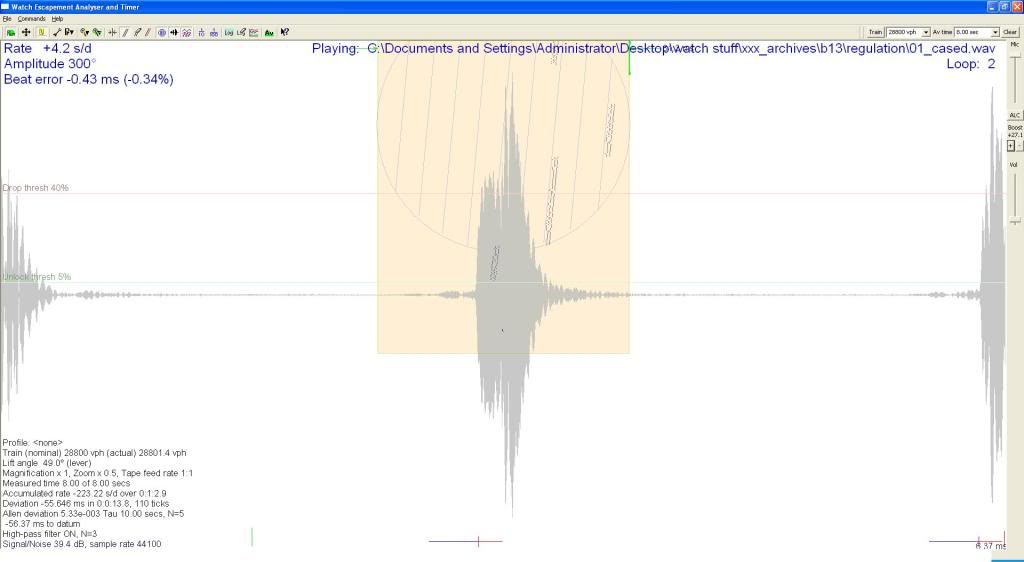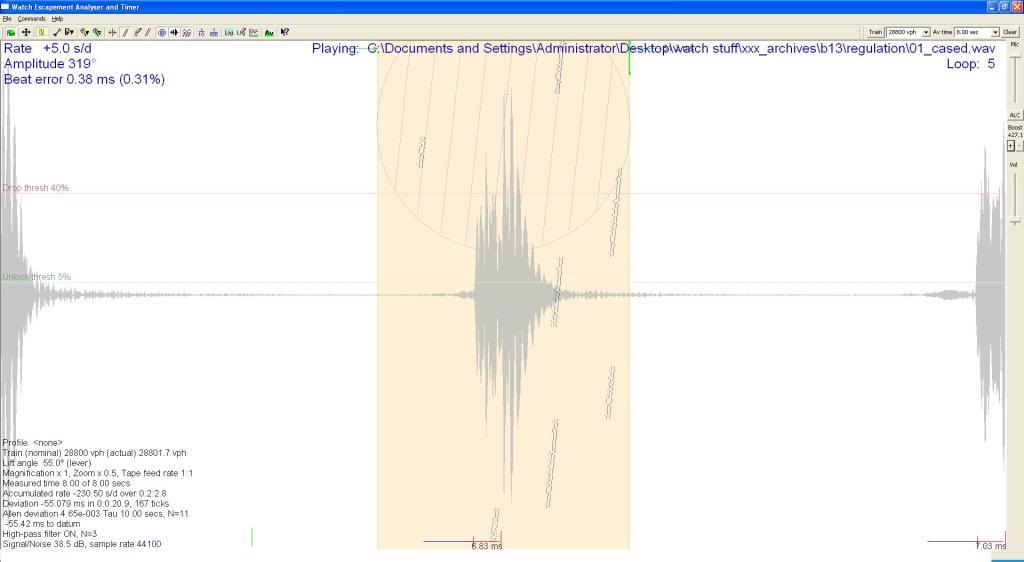- 2/3/07
- 688
- 2
- 0
Recently folks have been posting analyzer screenshots, opening up every parameter to scrutiny. One of these parameters is lift angle. Does it really matter if the lift angle is off by a bit? What are the effects? Can a dealer or watchsmith skew the rate and beat error significantly by raising or lowering the lift angle?
I have used 52 degrees as a lift angle on ETA 7750s for years, but recently it was brought to my attention that 49 degrees may be more in line with ETA specifications. So I conducted a little experiment using a recent recording of my now-sold 7750-based B13 Breitling movement (I save and archive recordings of nearly every movement I service). Documented below is the analyzer results using various lift angles:
First, at 52 degrees, which I have used for years and had been well documented as industry standard:

Next, I lowered lift angle to 49 degrees:

Finally, I tried raising to 55 degrees:

What I have concluded is that raising or lowering the lift angle by 3 degrees up or down has minimal effect on rate and beat error. At the most, about half a second and about 0.1 milliseconds respectively.
This info will likely cause you to parse even further the analyzer results that you receive.
I have used 52 degrees as a lift angle on ETA 7750s for years, but recently it was brought to my attention that 49 degrees may be more in line with ETA specifications. So I conducted a little experiment using a recent recording of my now-sold 7750-based B13 Breitling movement (I save and archive recordings of nearly every movement I service). Documented below is the analyzer results using various lift angles:
First, at 52 degrees, which I have used for years and had been well documented as industry standard:

Next, I lowered lift angle to 49 degrees:

Finally, I tried raising to 55 degrees:

What I have concluded is that raising or lowering the lift angle by 3 degrees up or down has minimal effect on rate and beat error. At the most, about half a second and about 0.1 milliseconds respectively.
This info will likely cause you to parse even further the analyzer results that you receive.
